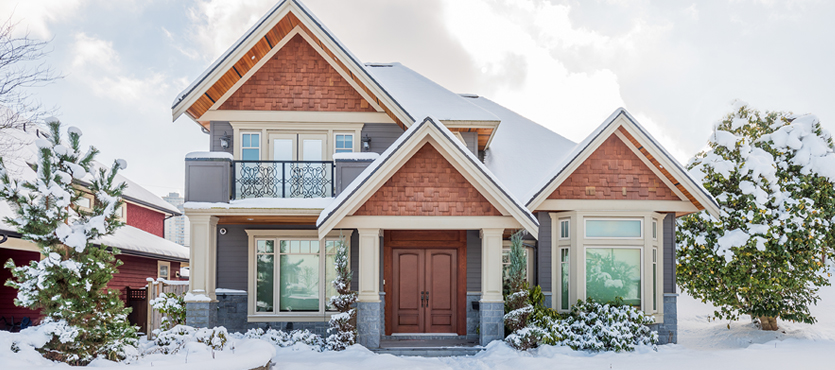Toronto is prone to severe weather that can cause havoc throughout the year, and winter is no exception. With winter storms causing damages every year worth millions of dollars, it is important to take the necessary steps to winterize your home and prepare for the cold months. For new or prospective homeowners, winter storms and plunging winter temperatures can cause significant damage to your homes.
While many tasks require professionals to perform, others are easy enough that you can do them on your own without too much difficulty. Here are five winter struggles you should be aware of as a Toronto home-owner.
Clogged Gutters
During the fall, gutters can often get clogged with dead leaves and animal debris such as bird nests. As the temperature drops, if the water is unable to drain through the roof, it will just sit in the gutter and freeze, forming an ice dam. When this happens, snow will continually build up and apply pressure to the gutters, which can be dangerous.
Once the snow and ice have built up enough and begin overflowing, icicles can form from your roof and gutters, and although pretty to look at, they can be quite dangerous. To avoid this, be sure to keep your gutters clear.
Frozen Pipes
Again, pipes run throughout your home and are easy to forget about, but when winter arrives, so do the problems. When water freezes, it expands and puts pressure on your pipes, causing them to burst when left unattended. External pipes are particularly prone to bursting, but even the interior ones need to be carefully insulated and drained. To minimize risk, it’s best to call a professional to inspect your piping and ensure they are properly insulated to prepare for the winter.
Roof Collapse
Like everything else, you should inspect rooftops periodically for signs of wear. As it gets colder, roofs can suffer from freezing conditions, high winds, dampness, and immense weight from snow. If left unchecked, your roof’s structural integrity may deteriorate and even collapse in the worst-case scenarios.
To prevent any problems, the first thing you should do is visually inspect your roof. It is especially important to prevent too much snow from building up on your roof, so consider taking a ladder and clearing the snow off of the roof yourself. Additionally, the rooftop sealant does wear and crack over time, so be sure to check that and re-seal any worn areas.
Carbon Monoxide Poisoning
Heat sources in your home may produce carbon monoxide that can be dangerous if left unchecked. As it gets colder, you are likely to want to use your heating devices more often, leading to more carbon monoxide emissions throughout your home that can be easy to overlook and cause problems when there is limited airflow. To avoid any health hazards, it is important to make sure your carbon monoxide detectors are properly working and will alert you should carbon monoxide reach dangerous levels.
Brickwork Damage
Brick is a durable material that can last a very long time. While it is tough, it is still liable to deteriorate over time, especially over the winters. Clay bricks are a porous material that can absorb water damage, and in the winter, the water can freeze and expand within the brick, leading to cracking and weakening. Additionally, the mortar is also susceptible, so it is important to inspect the brick and mortar of your home periodically and identify any signs of damage early on.
Keeping your home winterized is important for staying warm and avoiding costly repairs down the road. If you are experiencing any damage to the brickwork in your home, Turnbull Masonry offers many services including tuckpointing and repointing to restore brick constructions. Get in touch with our amazing team today.

